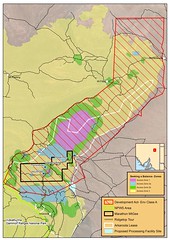 Submissions on 'Seeking a Balance - conservation and resource use in the Northern Flinders Ranges' plan are rolling in.
Submissions on 'Seeking a Balance - conservation and resource use in the Northern Flinders Ranges' plan are rolling in.As we've noted previously, submissions don't have to involve a complex examination of the issues and intricacies of the proposed zoning system. They can be short and punchy should you only wish to make clear your own opposition to the concept of mining being allowed in the Arkaroola Wilderness Sanctuary. I have chosen something from this genre as the first example piece I've posted below.
Of course, if you are able to find the time to assemble a more complex argument it's also good to tackle any of the broad range of specific issues the document raises - or the questions it leaves begging! Accordingly, I've attached a couple more examples that pursue different lines of argument in more detail.
You don't have to buy into the bizarre idea that some kind of reasonable 'balance' can be achieved by allowing mining in a wilderness area! As a correspondent asks below 'Would NSW allow mining on the Kosciuszcko plateau?' Isn't the whole point of conservation areas is that they are excluded from precisely this kind of economic activity? In Arkaroola and the wild northern Flinders Ranges the state government simply cannot have its environmental cake and eat yellowcake, too!
So; don't submit - make a submission! And when it comes to submissions, the main thing is that they arrive on Mr Tyne's and/or Mr Irving's desks - or in their in-boxes - by December 19! Their contact details are posted again below.
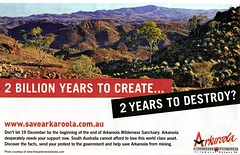 There's also an excellent collection of example submissions available at the Save Arkaroola website - see the links at the bottom of the 'how can I help?' page
There's also an excellent collection of example submissions available at the Save Arkaroola website - see the links at the bottom of the 'how can I help?' pageexample one
Gentlemen,
Would NSW allow mining on the Kosciuszcko plateau? Would NT allow mining on Uluru? Would WA allow mining in the Stirling Ranges? Would Tasmania allow mining at Cradle Mountain? Would Victoria allow mining on the summit of Mt Bogong? Would Queensland allow mining on the Great Barrier Reef?
Rhetorical questions but germane ones. Unless one has been to Siller's Lookout on a cool winter's morning its impossible to describe the effect this area has on people. Arkaroola should be our 'secular scared site', to be FULLY and unequivocally preserved as an ecologically contiguous whole forever, not subject to an internecine cartographic 'death of a thousand cuts' and subsequent glossy greenwash campaign ('Seeking a Balance' being a typical example of the latter). Even when I cant get to Arkaroola, I feel better just knowing it is there, and I know I am not alone. I wonder how long I will be able to feel that way.
The fact that it has not been formally declared a national park is a historical anomaly ameliorated only by the excellent stewardship the Spriggs have demonstrated for decades. Why aren't they celebrated even more than they are for being the real pioneers of sustainable eco-tourism in this state?
I will leave the broader political, environmental, indigenous, spiritual and yes, even the economic arguments (see above) for the TOTAL PRESERVATION of this trifling percentage of the state, compelling as they are, to the many others who will surely submit their despairing and bewildered responses to this new government plan. Suffice to say that no government that pursues these policies will ever get my vote.
Save Arkaroola. Save our National Parks system.
example two
I want have to my opinion registered that exploration and mining, and in particular uranium mining, has the potential to seriously damage Arkaroola’s acclaimed tourism operation.
Arkaroola is an area of high conservation value in South Australia. Arkaroola is now known as Arkaroola Wilderness Sanctuary, with official sanctuary status under the National Parks and Wildlife Act 1972.
I am very concerned about the water use of a mine. The hydrology of the Flinders Ranges is highly complex. The relationship between aquifers, the surface springs and recharge rates requires investigation so they are not put at risk.
In a submission to the Australian Government in 2007, Marathon Resources advised that it would require 5·5 million litres a day for processing activities should a mining application be approved in the future.
The company would seek water from a variety of sources on the plains and in the ranges. Any approval to extract this measure of water from the region would contravene the government’s own targets and prescriptions around the sustainable use of water resources. It is vital that ecosystems like that in Arkaroola, enduring periods of drought as it did through the 10 years to summer 2008/9, not have their water resources compromised.
I believe that Arkaroola’s water needs to be given the highest level of protection.
Through Seeking a Balance, the government plans to introduce a new regulatory framework that will likely see parts of the Arkaroola landscape, currently protected under Environmental Class A provisions, re-zoned for standard exploration and mining activities. This is totally unacceptable.
The iconic features of Mount Painter and Mt Gee must be protected from invasive activity such as mining.
Arkaroola remains relatively weed-free, with weeds mostly restricted to day visitor areas and watercourses in the southern and south-eastern sections of the property. This situation would change dramatically with the incursion of mining activity in the region as exploration and mining increases the risk of weed introduction.
Even after a decade of drought, the integrity of Arkaroola’s native vegetation, particularly in the Mount Painter zone is highly rated. A fragmented zoning arrangement for sections of this highland area provides little assurance that this will continue.
Arkaroola had the shortest grazing history of any pastoral property in the Northern Flinders Ranges. Much of the sanctuary’s heartland has never carried livestock and plant communities are intact. Great topographic variation provides a wealth of micro-climates and environmental niches. There is great potential for remnant populations of small mammals to have survived on Arkaroola.
Some of the wildest, most elevated, least modified and most biodiverse landscapes in the Flinders Ranges occur in north- eastern districts. Five properties with contiguous landholding provide refuge for remnant, endemic, rare and threatened species, some of which are found nowhere else in the world. They also provide a corridor of connectivity for the movement of dispersing rock-wallabies. With its unique geology and landforms, lack of weediness, intact plant communities, and position as the northernmost protected area in the Flinders Ranges, Arkaroola Wilderness Sanctuary is a critical part of a greater Northern Flinders corridor. Despite this, in developing the Seeking a Balance framework, the South Australian Government has failed to deliver appropriate levels of protection for individual species and ignores its own policies that advocate landscape scale conservation The new framework, it is claimed, will balance resource use and conservation, and provide more certainty for mining and exploration companies, landholders, traditional owners and the community.
I believe that Seeking a Balance is inconsistent with other natural resource management policies, is flawed in its methodology, and is skewed toward exploration and mining at the expense of the environment. It is appalling that people like me have to respond in this way to something that should be so far from reality as to be a poor joke. Unfortunately the proposals are real and scary.
example three
To whom it may concern:
I have been informed that the government wishes to "re-evaluate" its zoning on mining activities in the Northern Flinders Ranges. I have deduced from the publication 'Seeking a Balance' that the general aim is for the government to protect certain places of higher environmental/cultural/wildlife/geological/heritage/tourism value within the region, but then open the remaining areas in the region to mining exploration an activities.
I am opposed to this proposal, as there are a number of reasons that this act could be devastating to the area. Firstly, there are a number of endemic species to the area, and if disturbed by mining activities, or if invasive species are introduced through an increase of traffic into previously untouched areas, we could lose plants and animals not found anywhere else in the world.
There are also species that have been endangered that thrive in the area, such as the Yellow Footed Rock Wallaby. The species has a high concentration of colonies along the Arkaroola Creek, however in the proposed re-zoning, there are no bio-corridors linking the colonies in the north with those in the central regions or the north eastern region. Bio-corridors are essential to species survival as they allow the species to move to adjacent areas and to adapt to environmental change.
There are also important issues for Indigenous people, namely the Adnyamathanha People, which are barely even skimmed across in the proposal. Are the traditional owners being consulted on this matter? If so, are their opinions and concerns taken into account, or is this process simply a formality? Please inform me on this matter, as I am very unclear about the process undertaken in this circumstance.
There are also implications for tourism. As Arkaroola is an outstanding example of eco-tourism, the affects of mining exploration and activities going on within the sanctuary are not appealing to potential eco-tourists. The general characteristics of mining, such as water over-use, waste (see Marathon Exploration's inappropriate methods and waste dumping at Mt Gee and Yudnamutana Gorge), as well as pollution (both noise and air etc) will have a negative impact on the landscape, and therefore reduce the appeal to tourists, not to mention all other species that live there.
Geologically, the entire area is significant. There are important features within the area that have scientific importance, including holding information about past climates, which is becoming more and more important in the face of accelerated climate change.
Astronomically, Arkaroola has a spectacular outlook, with very little light pollution and usually fine weather, the star gazing is an attraction for tourists and astronomers. If mining activities are permitted nearby, what sort of affect will the amazing clear skies encounter?
The Euro-entric heritage of the area dates back to the 1840s, with the area being used for a number of different fields. Agriculture did not suit the landscape, and mining was tried and abandoned, and the most appropriate use was found - a wilderness sanctuary. Going back to mining in the area would be a step backwards - does the government want to move forward or backward? We don't need any more reasons for the other states to call SA a "little backwater".
I am also concerned that the mine at Beverly is perhaps not being fully utilised if concentration has turned towards the areas around Arkaroola. Are there issues regarding the Beverly mine that the public should be aware of?
It appears to me that the government are placing mining above environment and conservation in this instance, which is absolutely appalling. That is not what I elected the government to do. I am deeply disappointed that the policy makers have not learned a thing when it comes to over exploitation of resources, environmental degradation, climate change, and environmental irresponsibility. If economy is the states only concern and priority, then we will ruin our precious environment.
Please do not open up areas in the Northern Flinders Ranges to mining and resource exploration and activities that are currently protected. I would prefer to see a higher level of protection to the entire area. As biodiversity does not limit itself to pockets of landscape in the region - neither should the protective zoning.
Please reconsider your proposal to provide better environmental protection of these important areas
Submissions on Seeking a Balance are due in on December 19th (There are rumours of a postponement of this deadline until the end of January next year, but neither PIRSA's nor the Dept for Environment's 'Seeking a Balance' websites currently confirm this. I'll update this information when and if it changes.) They can be e-mailed or posted to;
Email: jason.irving@sa.gov.au
Phone: (+61 8) 8124 4707
Post: Mr Jason Irving
Manager Policy and Planning
Department for Environment and Heritage
GPO Box 1047
Adelaide SA 5001
Australia
Email: ted.tyne@sa.gov.au
Phone: (+61 8) 8463 3033
Post: Dr Ted Tyne
Director, Mineral Resources
Primary Industries and Resources SA
GPO Box 1671
Adelaide SA 5001
Australia

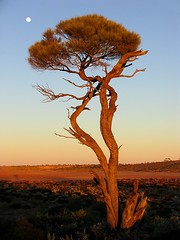
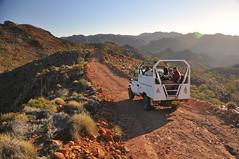
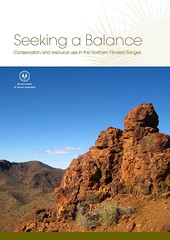
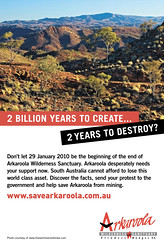
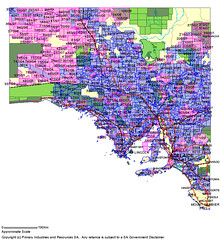
![link to the u[n]sa homepage](http://users.chariot.net.au/~greenh/blog/unknownsa_ublog-text.gif)


![link to the u[n]sa features page](http://users.chariot.net.au/~greenh/blog/features_ublog-text.gif)
![link to the u[n]sa kangaroo island feature image pages](http://farm2.static.flickr.com/1306/1187313059_93fdefd86b_o.jpg)
![link to the u[n]sa katarapko creek / murray river np feature image pages](http://farm2.static.flickr.com/1435/1181073355_b5c45f799d_o.jpg)


!['constellation' - wild country [national] set on flickr](http://farm1.static.flickr.com/155/415123844_3e6da621e5_s.jpg)

!['the bay serene' - the wild west [coast] set on flickr](http://farm1.static.flickr.com/121/312226516_606ac35455_s.jpg)








![u[n]sa journal -thanks for your time! u[n]sa journal - thanks for your time!](http://users.chariot.net.au/~greenh/blog/journal_ublog-text.gif)
I will make another Submission.
ReplyDeleteYou are doing a great job of keeping this issue alive.
Some "Environmentalist" friends of mine recently said it was because the owners would not hand it over as a National Park. Some people are so narrow-minded, it drives me crazy.
Re the "hypotheticals" you pose - Kosciusko, Cradle Mtn, etc - unfortunately the answer is probably yes.
Cheers
Denis